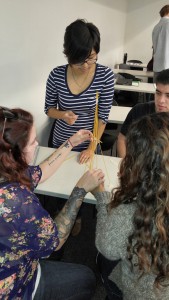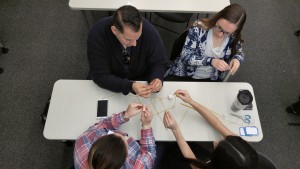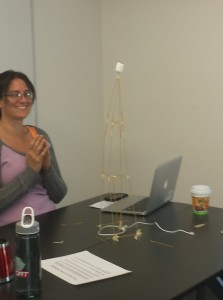Day 2: The Presentation of Self
I am an introvert. I prefer to spend time by myself, with my family, or with a few close friends. When I was younger my introversion was interpreted by others as shyness. I internalized that narrative. I avoided speaking to groups, and discussing the picayune details of my life. Those things made me uncomfortable.
Much of what I do as a college professor I do by myself, or with a close colleague. Being a professor allows me to indulge my introversion. Except when it does not. Much of what I do involves interaction with others. Teaching classes, presenting papers, contributing in meetings, describing my research–they are all parts of the job. They all require me to be someone other than my introverted self.
On a daily basis–in front of a class, in meeting, at a conference–I find myself in uncomfortable situations, situations that challenge my tendency toward introversion. If your first exposure to me was in a classroom you would swear that I was an extrovert, a comedian.
I am a performer. I am an actor.
According to sociologist Erving Goffman, we are all actors. In presenting ourselves to others we adopt verbal and nonverbal means of communication that shape how others understand us. Goffman calls this the “presentation of self.” He uses the metaphor of theater to understand how the actor and the audience interact to create understanding.
Presentation of self depends on the individual and the audience. My presentation in a classroom involves a combination of humor, informality, curiosity, and professional rigor. In a meeting, a mixture of authority, humor, and purposeful ignorance. The common thread in my presentation of self is humor, which I consider indispensable for a variety of purposes, especially relieving class or group tensions. I am reasonably funny. It works for me. Especially to the degree that my authority is already established.
This week the Interdisciplinary Learning Community focused on the presentation of self. Lindsey O’Connor (Sociology) discussed nonverbal behaviors and how they influence others’ impressions of us. Her main focus was Deborah Gruenfeld’s distinction between high and low status behaviors.
Behaviors associated with “playing high” include being open, and relaxed; keeping one’s head still, speaking in complete sentences, and holding eye contact. “Playing low” includes behaviors like keeping one’s body close and tight, minimizing one’s footprint, shrink, incomplete sentences, fleeting and jerky movements, glancing and looking away, smiling, trying to make others feel better. All of these behaviors indicate that you know and understand your position.
Effectively presenting oneself involves a combination of playing high and playing low. Playing high promotes confidence in one’s self and thus in others. Playing low improves others’ sense that one is approachable. To help students better understand these two sets of behaviors they were asked to do two 30-second “elevator talks” –one adopting behaviors associated with playing high, and one demonstrating behaviors of playing low.
There is no perfect recipe for presenting oneself. At least I do not think there is. One has to understand one’s self and one’s audience. What is comfortable and may work for me may not work for another person. And my presentation of self does not work for every audience. Some will find my humor or informality (e.g., my willingness to employ profanity, wearing jeans and t-shirts to work) off-putting, or unprofessional. Yet, simultaneously, my willingness to use humor and occasional profanity may paradoxically communicate a higher sense of status.
Each of us has to find a level of comfort with our presentational style. We need to adapt to changes in our audience. We need to become shrewd students of our own behavior, how our behavior affects others, and how others’ use their behaviors to influence our impressions of them.



